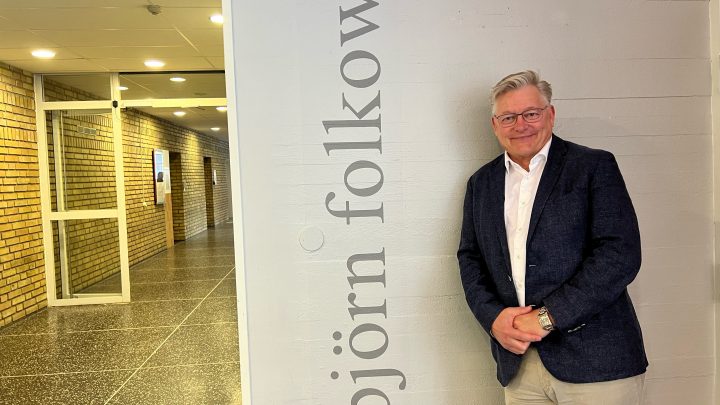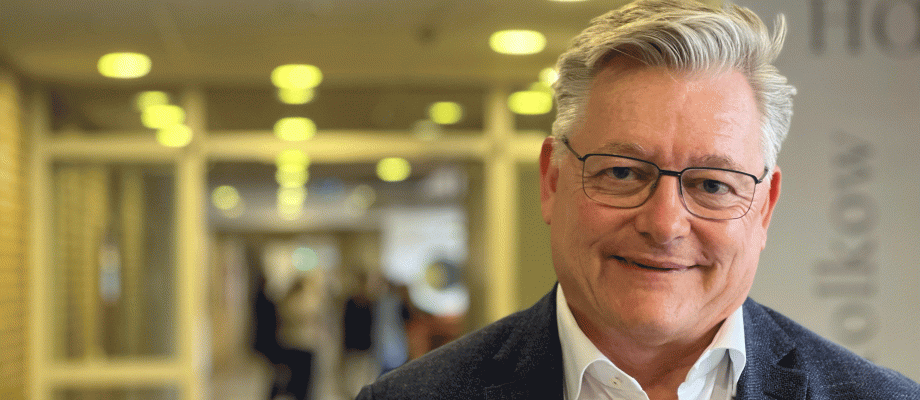PEOPLE. After more than seven years as global program head at the pharmaceutical company Novartis in Switzerland, Börje Haraldsson is now back at the University of Gothenburg as an adjunct professor. In Sweden, he and his colleagues now await the first clinical trials for the pharmaceutical they are developing to treat metastatic kidney cancer.
A chance to really help provide kidney disease patients with more opportunities in life. This is how Börje Haraldsson sums up the irresistible offer that led him to leave his position as professor of nephrology at the University of Gothenburg at the end of 2014. As executive director, he had the opportunity to head the early research and development of pharmaceutical candidates to treat kidney disease at Novartis in Basel, Switzerland.
“It has been a fantastic period that has taught me a lot,” says Börje Haraldsson.
Extensive portfolio
Although his new position at Novartis also revolved around research, the managerial job more closely resembled that of a chief executive officer, with a focus on commercialization and products. Due to confidentiality requirements, he cannot say exactly what he has been working on in recent years.
“I have continued to conduct research, but what I have done has been secret. We worked with potential treatments that had not yet been tested in humans, and the portfolio became very extensive as time went on. Later I made the transition to heading two teams working on the late stage of developing two pharmaceutical candidates considered promising,” he says.
He had never before been attracted to the idea of working in the pharmaceutical industry. Maybe a bit of snobbery was involved, he muses. Maybe he then had the idea that real research had to be conducted in universities. But over the years he came to the realization that the differences between industry and academia are quite small:
“Whether they work at the University of Gothenburg or at a pharmaceutical company, researchers have the ability to interpret data and put it in context. Each of the colleagues in the teams I headed could have been world-class professors at universities around the world, but for various reasons they found their passion in industry.”
Possible cancer pharmaceutical
He has now chosen to return from Switzerland because the wheels have begun turning on another project close to his heart. Together with Jenny Nyström and several other research colleagues, Börje Haraldsson is developing a new pharmaceutical that could cure metastatic kidney cancer. The development of the pharmaceutical takes place within Oncorena, a company the researchers started with the help of GU Ventures and investment companies.

“The basic scientific research has been going on for a little more than 10 years while I have been in Switzerland. Now the team has been able to present results from more animal studies, which they needed for them to obtain permission from the Swedish Medical Products Agency to initiate clinical trials. Ethical approval is now also in place.”
The first clinical study will be held in collaboration with researchers at Karolinska University Hospital, starting during, or after, the summer.
“It is exciting and stimulating to collaborate with colleagues at Karolinska, who are also passionate about finding a treatment that can help these patients.”

Idea from toadstools
No cure currently exists for kidney cancer that has metastasized. The pharmaceuticals available provide an expected survival of just two years for the thousands of patients diagnosed each year. The new pharmaceutical is based on the active substance in the deadly webcap mushroom, orellanine, which has the ability to seek out the kidney and incapacitate it. It also finds its way into metastases emanating from the kidneys and destroys them.
“Patients lose their kidney function and will need lifelong dialysis, or kidney transplants, but the hypothesis is that they can be cured of their cancer. The patients we will include in the first clinical study are already on dialysis, so they have no kidney function to lose.”
Interesting vectors
As a newly appointed adjunct professor at the Institute of Neuroscience and Physiology, his academic duties start immediately. Just a few days after we meet, he will assess students in the medical program. He also plans to establish research at the University of Gothenburg again.
“I would like to know more about the solute carrier – the molecule that bring orellanine into the kidneys and into the kidney cells.”
It is not yet known whether all forms of kidney cancer have the carrier necessary for orellanine to enter the cells. Without that protein, the new treatment cannot work. But there are also other reasons why the solute carrier is highly interesting:
“From a scientific standpoint, we find it interesting that a molecule can be so selective, targeting only kidneys and specific kidney cancer cells. This means we may be able to develop treatments for hereditary diseases, for example, using nucleotide research to target cells to express desirable proteins.”
Complete development environment

He began his own doctoral education at Medicinareberget in 1979, with well-known Professors Björn Folkow and Bengt Rippe as supervisors. Börje Haraldsson describes how the Faculty of Medicine and Sahlgrenska Hospital were then intertwined in a completely different way than today. When he started studying research at the department of physiology, it was in a complete academic development environment, with informal meetings and discussions among doctoral students, teaching assistants, clinicians from the hospital, and employees of Hässle (now AstraZeneca).
“We met as individuals who wanted to develop our knowledge. Recreating those kinds of environments is an important mission for academia and hospital management. Today we hear strengthened ‘knowledge management’ being discussed, which is an oxymoron akin to Orwell’s ‘ignorance is strength’.”
Björn Folkow was, to say the least, a successful supervisor. Of the doctoral students he supervised, 30 later became professors at various higher education institutions. Folkow was an active researcher at the department into his 90s, until he passed away in 2012.
BY: ELIN LINDSTRÖM












